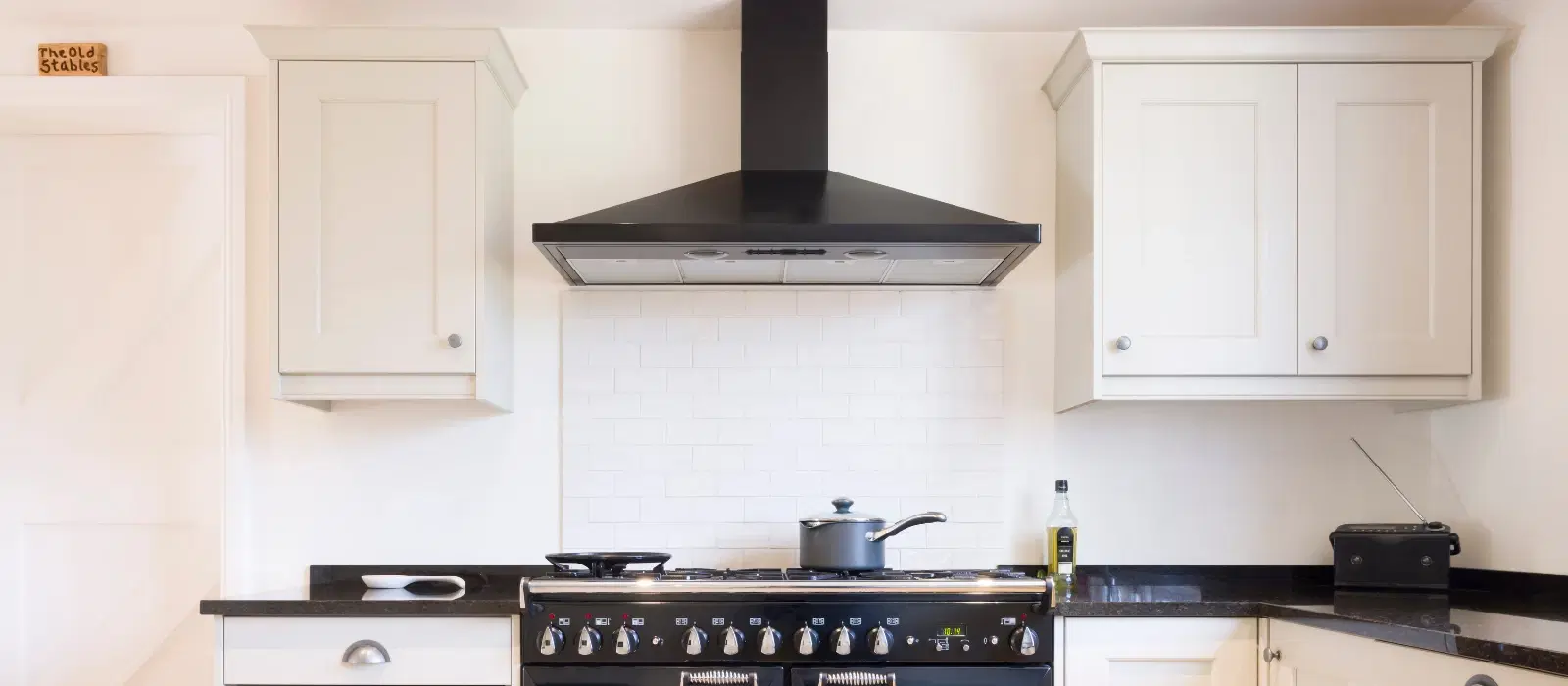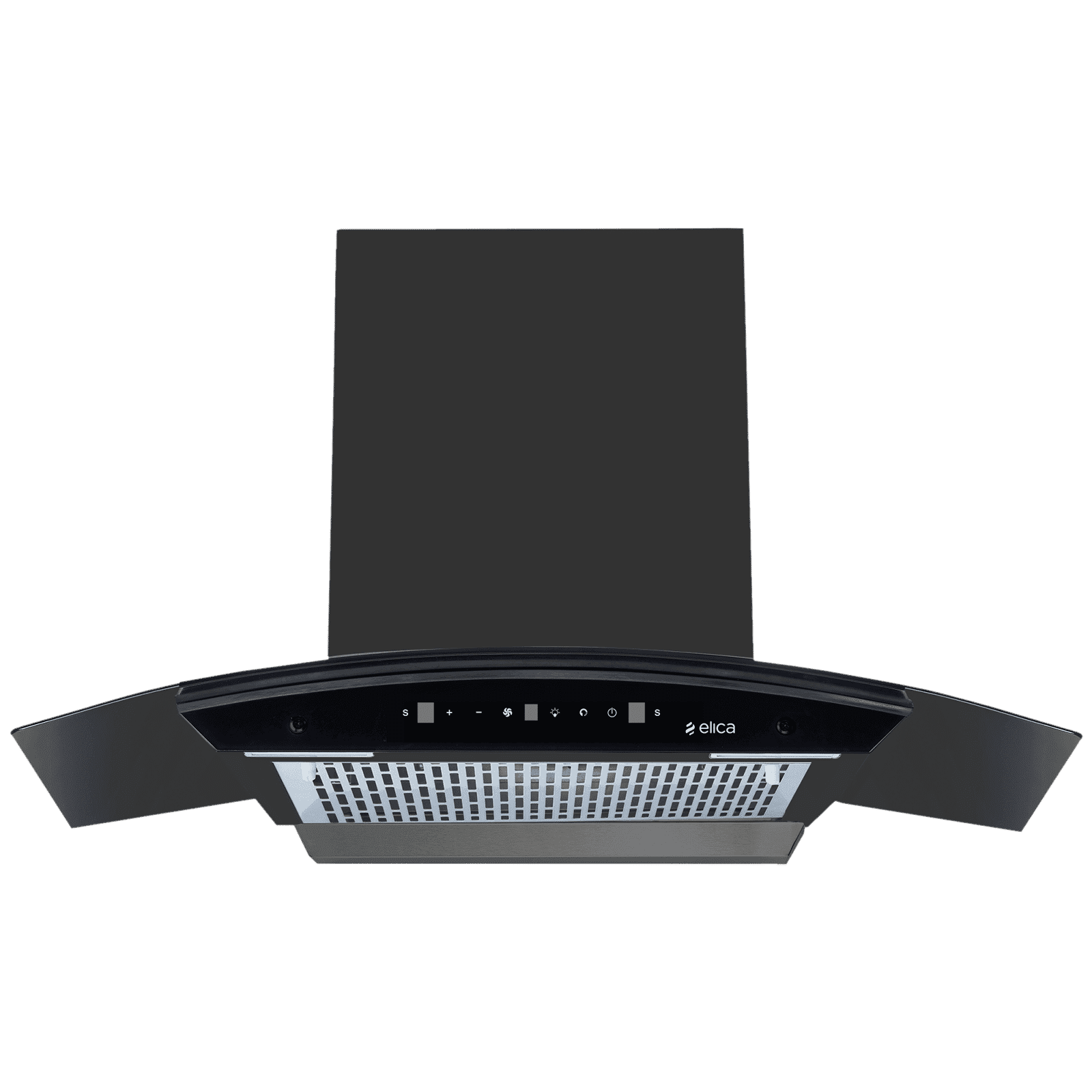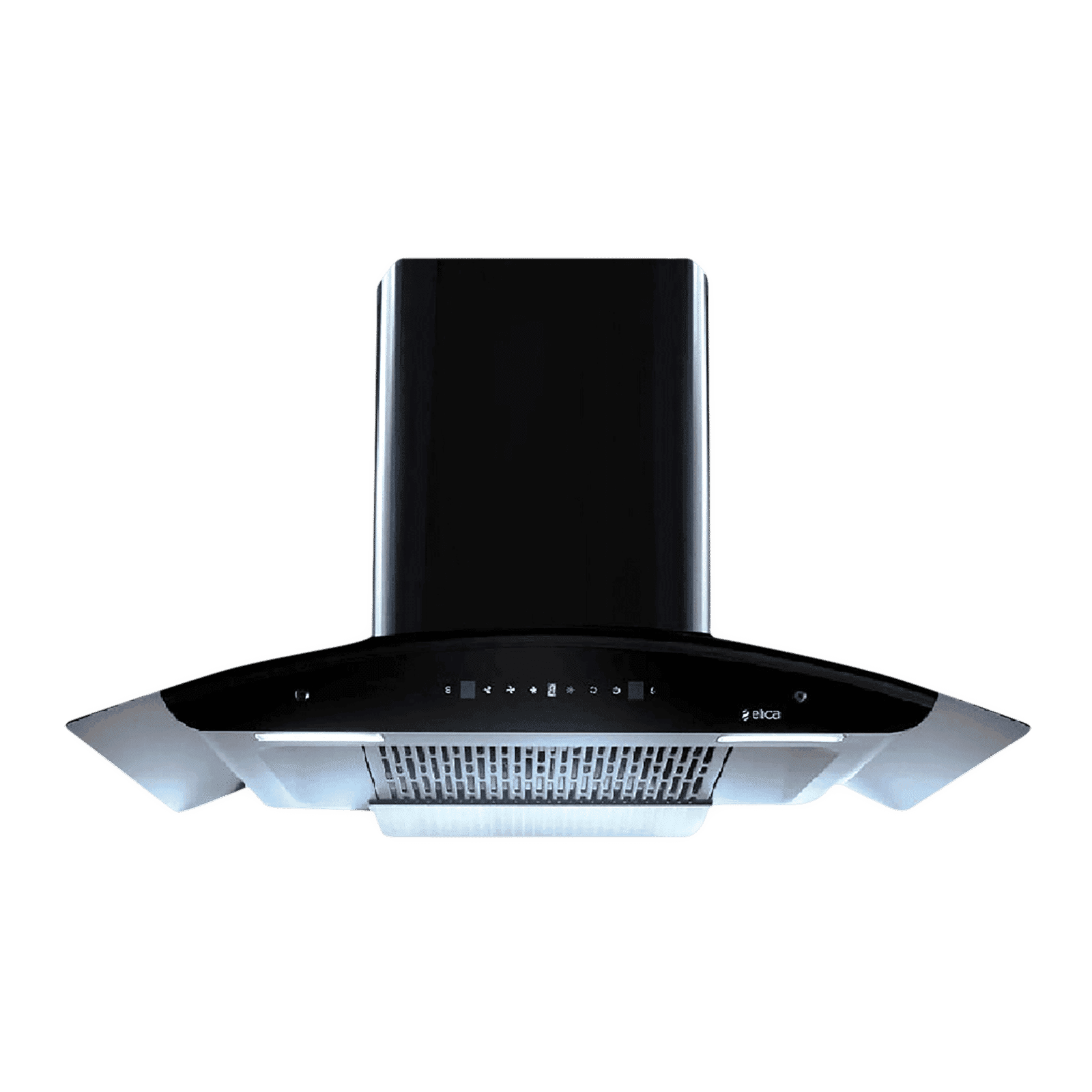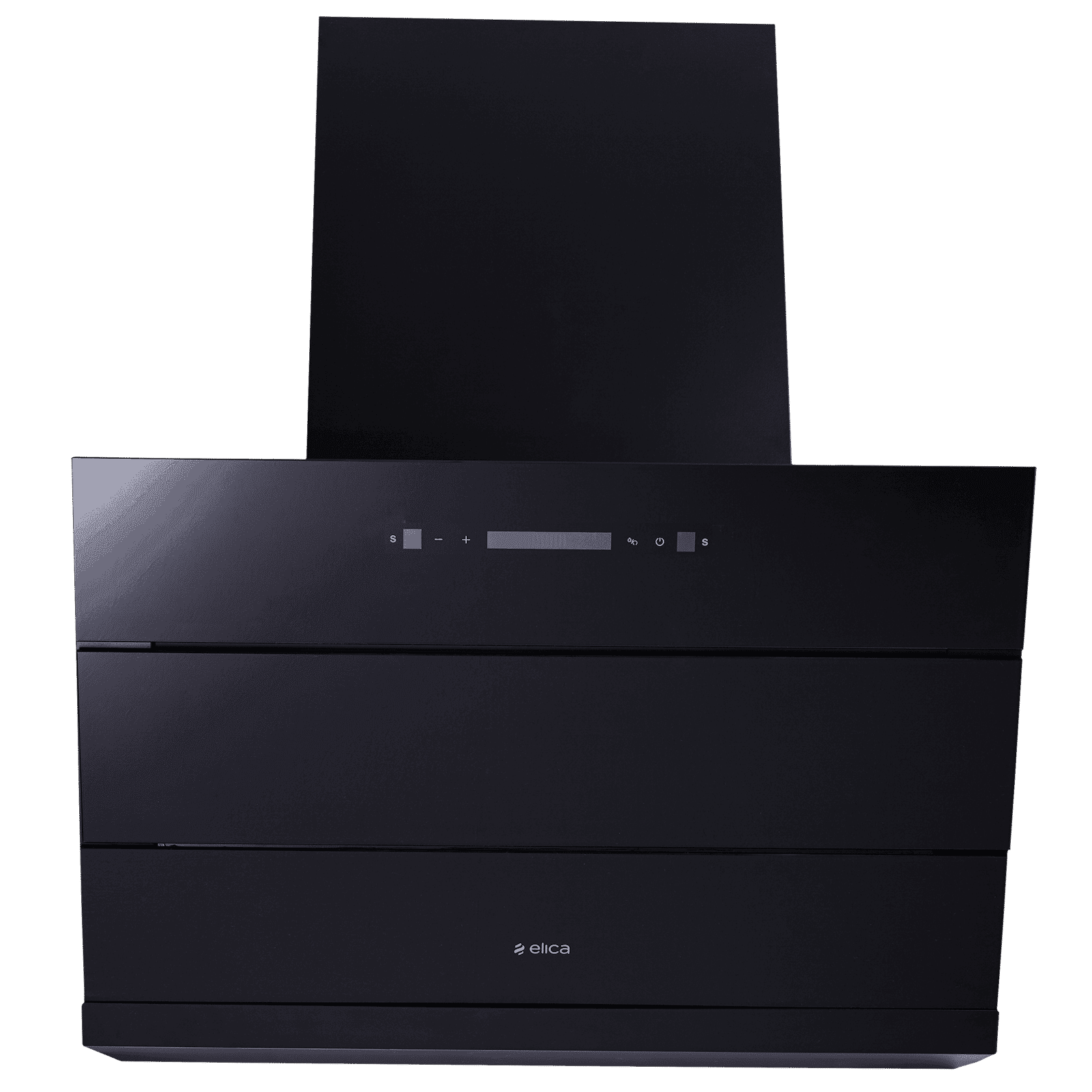
Home Appliances
•05 min read

Buy elica WDFL 900 BLDC HAC LTW MS NERO 90cm 1500m3/hr Ducted Auto Clean Wall Mounted Chimney with Motion Sensor Control (Black) online at best prices from Croma. Check product details, reviews & more. Shop now!
Did you know that improper chimney height from stove can reduce stove efficiency by up to 30% and increase the risk of smoke backdrafts? This article provides an essential checklist to guide you through determining the correct chimney height and ensuring safety, performance, and compliance with regulations.
The chimney height from stove refers to the vertical distance from the top of the stove pipe to the tip of the chimney. This measurement is crucial for optimal stove performance and safety. When the chimney height is properly set, it ensures the correct draft, which in turn promotes efficient combustion and minimises the risk of harmful smoke entering your living space.
The commonly accepted 3-2-10 rule states that the chimney should extend at least three feet above the roofline and two feet higher than any part of a structure within 10 feet horizontally. This simple guideline is essential for ensuring that the chimney is tall enough to create a proper draft and disperse smoke safely. Imagine a setup where your chimney clearly meets these criteria—your stove will operate efficiently, reducing the occurrence of backdrafts and indoor smoke problems.
It is important to adhere to the minimum chimney height requirements to ensure proper draft and safety. Many local building codes reinforce these standards by recommending that the chimney extend a specified distance beyond the roofline. This minimum chimney height is vital to produce enough suction to pull smoke out of the stove effectively. Remember, failing to meet these guidelines can lead to operational issues and even potential hazards over time.
The roof pitch plays a significant role in determining the placement and overall height of your chimney. A steeper roof may allow for a different configuration, whereas a flat roof might require precise measurements. Start by accurately measuring your roof's pitch, and then calculate the necessary chimney height to exceed both the roof and any nearby obstructions. This assessment will not only optimise chimney draft efficiency but also enhance the safety of your stove setup.
The role of the stove pipe in determining the total chimney height is equally critical. There are specific clearance requirements between the stove pipe and the ceiling, and ensuring these distances will help avoid potential hazards such as heat damage or fire risks. Adjusting the stove pipe height properly will finalise the overall installation, ensuring both effective performance and adherence to safety standards.

Buy elica WD TFL HAC 90 MS NERO 90cm 1425m3/hr Ducted Auto Clean Wall Mounted Chimney with Motion Sensing Technology (Black) online at best prices from Croma. Check product details, reviews & more. Shop now!
Chimney draft efficiency directly influences stove performance. An optimally tall chimney allows for a stronger draft, facilitating more complete combustion and enhancing energy efficiency. Whether you have a traditional wood stove or a gas stove, it is crucial to determine the optimal chimney height for stoves based on your specific installation and environmental conditions. An effective chimney will pull the smoke upward, keeping it away from your home’s living areas and improving overall stove efficiency.
Incorrect chimney height can lead to several draft issues such as backdrafts, poor combustion, and even the accumulation of creosote. To improve chimney draft efficiency, consider options like adding a chimney cap to stabilise airflow or extending the chimney to meet the guidelines. Regular maintenance and timely adjustments are key solutions that can help maintain optimal performance, ensuring long-term safety and comfort in your home.
Pro Tip for Home Safety: Following the 3-2-10 rule not only ensures optimal draft efficiency but also prevents dangerous backdrafts that can lead to indoor air pollution. Always double-check your chimney height calculations for both safety and performance.
Local building codes and safety regulations provide clear guidelines on chimney height. Ensuring that your chimney meets these regulations is vital to avoid fines or potential hazards. By adhering to these rules, you can protect your home and family by ensuring that your chimney is adequate for providing a strong and safe draft. Always check the current codes applicable in your area to ensure you remain compliant.
For those using wood stoves, there are additional guidelines related to clearance and insulation. Wood stove chimney guidelines emphasise maintaining safe distances from combustible materials and ensuring proper insulation to prevent heat escaping into unwanted areas. These measures are particularly important as they minimise fire risks while maximising stove efficiency, ensuring that all components work harmoniously.
Summarising the safety checklist, a safe chimney height for stoves is achieved by following several critical steps: adhere to the 3-2-10 rule, verify compliance with local regulations, and ensure correct installation of both the stove pipe and chimney. Regular inspections and maintenance checks help in identifying potential issues before they escalate, securing your investment and providing long-term peace of mind.

Buy elica EFL 3V 751 BLDC HAC LTW MS NERO 75cm 1500m3/hr Ductless Auto Clean Cabinet/Hob Mounted Chimney with Motion Sensor Control (Black) online at best prices from Croma. Check product details, reviews & more. Shop now!
Installing a chimney properly requires careful planning and the right tools and materials. Begin by measuring the distance from your stove to the roofline and ensure the chimney meets the minimum height requirements. A comprehensive chimney installation guide involves verifying that all joints are secure, using high-quality materials suitable for the local climate, and following the recommended stove pipe height requirements. This precise installation ensures not only safety but also optimal performance.
For optimal chimney draft efficiency and stove chimney performance, regular maintenance is a must. Clean your chimney periodically to remove soot buildup, and conduct inspections to ensure that weather conditions like wind or rain do not affect performance. Simple measures such as installing a chimney cap and checking for any structural issues can extend the life of your installation, ensuring your system remains efficient and secure.
The chimney should extend at least three feet above the roofline and two feet higher than any nearby structure within a 10-foot radius, in line with the 3-2-10 rule for safe chimney height from stove installations.
This rule states that the chimney must be at least three feet above the roof and two feet higher than any structure within 10 feet. It is foundational for ensuring proper draft and preventing backdrafts.
For gas stoves, the recommended clearance between the stove and chimney is typically 24-30 inches, though specific requirements can vary based on installation guidelines.
Measure the distance from the stove's top to the roofline and use the 3-2-10 rule as your basic guideline. For more precision, a chimney height calculator can help verify your measurements against local standards.
The meticulous approach to determining chimney height from stove is key to ensuring not only compliance with safety regulations but also maximising your stove’s performance. By understanding the basics, considering factors like roof pitch and stove pipe height, and following best practices for maintenance, you can achieve optimal stove chimney clearance and draft efficiency. The benefits of a well-installed chimney include improved heat distribution, increased energy efficiency, and long-term safety for your home.
Stay tuned to our updates for more insightful guides on how proper installation and regular maintenance can safeguard your investment. With comprehensive support and expert tips, you always have the tools you need to keep your home running safely and efficiently. Every step you take in adhering to these guidelines is a step towards ensuring that your living space remains comfortable and secure.